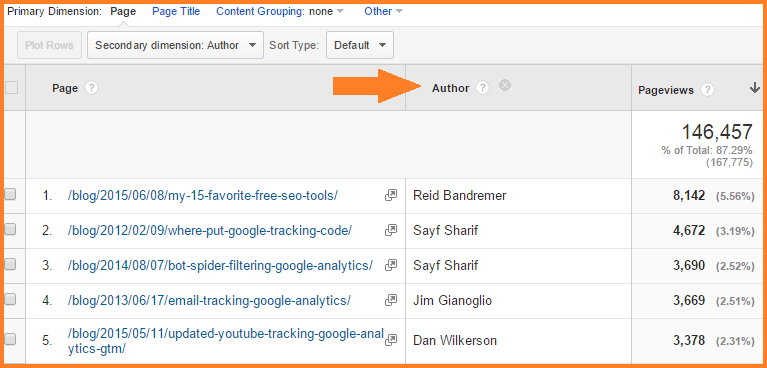The Value of 'Secondary Dimensions' in Google Analytics: In-depth Analysis
Wiki Article
Revealing the Intricacies of Second Dimension in Google Analytics: a Comprehensive Guide on How It Functions
Browsing the intricate realm of additional measurements in Google Analytics is a job that calls for an eager understanding of just how this attribute runs within the system. As electronic landscapes develop and data comes to be significantly vital for decision-making, realizing the subtleties of additional measurements can be the trick to unlocking valuable insights. From setting up reports to diving right into innovative methods, the journey to harnessing the power of second dimensions is both gratifying and challenging. Join us as we discover the details of this tool and discover exactly how it can change your data analysis strategies.Basics of Secondary Measurement in Google Analytics
When assessing information in Google Analytics, using the secondary dimension function supplies beneficial insights right into the performance of numerous metrics. The secondary dimension enables customers to better explore their information by adding an extra layer of info to their key measurements. By doing so, analysts can get a much more extensive understanding of the elements affecting their internet site's performance.In Google Analytics, the main measurements stand for the primary categories of data, such as web traffic resources or tools. When a secondary measurement is used, it provides a deeper degree of granularity by revealing an additional element of the data within the picked key dimension. If the key dimension is 'Traffic Resource,' including a secondary measurement like 'Touchdown Page' can disclose which details pages are driving web traffic from each source.
This feature is particularly useful for recognizing patterns, connections, and fads that might not be instantly noticeable when considering the information from a solitary measurement. By leveraging the additional measurement in Google Analytics, individuals can discover important understandings that can educate strategic choices and optimizations to improve site efficiency.
Establishing Second Measurement Reports
Increasing on the understandings obtained via the utilization of additional dimensions in Google Analytics, the procedure of establishing up second dimension records includes configuring extra layers of data to further boost the deepness of analysis. When the main report is selected, customers can click on the "Additional dimension" tab located over the data visualization location. From there, a drop-down menu will certainly show up, supplying a huge selection of choices to choose the second dimension that best complements the key data set.Leveraging Secondary Measurements for Insights
Using second dimensions in Google Analytics offers a calculated strategy to removing nuanced understandings for notified decision-making in on-line service optimization. By integrating main dimensions with additional measurements, services can dig deeper into their data to uncover important relationships and patterns that might not be promptly obvious. As an example, by segmenting web site traffic by geographical location (primary measurement) and afterwards including a secondary measurement like device classification, businesses can recognize if specific areas favor accessing the website using mobile or desktop computer.In addition, leveraging secondary dimensions permits organizations to gain a better understanding of customer behavior and choices. Assessing conversion prices based on web traffic sources (main measurement) along with the additional measurement of touchdown web pages can disclose which specific pages are most effective in driving conversions for natural search traffic versus social media web traffic. These insights can then educate advertising and marketing techniques and web site optimization efforts to improve overall performance and maximize ROI.
Advanced Methods for Second Dimensions
To additionally remove intricate insights and boost data-driven decision-making within Google imp source Analytics, carrying out innovative strategies for making use of additional measurements is vital in unlocking deeper layers of valuable details for business optimization. One innovative strategy is the usage of personalized dimensions and metrics, permitting the monitoring of particular user communications or behaviors that are not captured by default in Google Analytics. By applying and specifying custom-made dimensions, organizations can tailor their tracking to straighten with one-of-a-kind organization objectives and objectives.One more sophisticated method entails making use of filters in conjunction with secondary measurements. Filters make it possible for customers to refine the data presented in Google Analytics records, providing more targeted and relevant understandings. By using filters purposefully with additional dimensions, organizations can segment information better, leading to a more clear understanding of user behavior and efficiency metrics.

Optimizing Information Analysis With Additional Measurements

In addition, maximizing data analysis with secondary dimensions includes trying out various mixes to determine patterns and relationships that might not be promptly noticeable. This iterative approach allows analysts to adjust their coverage and emphasis on the most pertinent data points for their service purposes. Ultimately, by leveraging additional dimensions efficiently, analysts can boost the precision and effectiveness of their data analysis initiatives in Google Analytics.
Verdict
In conclusion, understanding the ins and outs of additional dimensions in Google Analytics is necessary for obtaining deeper understandings into web site efficiency. By establishing additional measurement reports, leveraging them for insights, and utilizing sophisticated strategies, experts can maximize information analysis and make educated decisions. This comprehensive overview has actually supplied a check out here detailed summary of how second measurements job and their importance in enhancing the logical capacities of Google Analytics customers.The secondary dimension allows users to even more dissect their data by including an additional layer of information to their main measurements. When an additional measurement is applied, it offers a much deeper level of granularity by showing one more facet of the information within the chosen primary dimension.Expanding on the insights obtained through the application of second dimensions in Google Analytics, the procedure of setting up secondary measurement reports entails setting up added layers of data to further improve the deepness of evaluation. By combining main measurements with additional dimensions, companies can dig deeper right into their information to reveal useful correlations and patterns that may not be instantly obvious. One method to enhance information analysis with secondary dimensions is to combine them with key dimensions to get a much more extensive view of internet site efficiency.
Report this wiki page